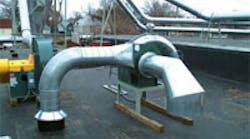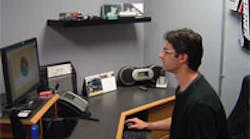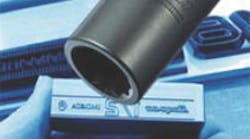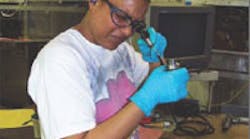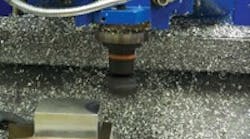It’s not only the machine tools but also their controls that add productivity to the manufacturing operations at Smith’s Machine. The Cottondale, Ala., shop supplies high-quality machined parts to the massive Mercedes Benz U.S. International facility in Tuscaloosa County, Ala., and at the heart of the shop’s operations are specialized work cells for dedicated long runs.
These cells contain DMG Twin mill-turn centers fed by robotic parts handlers. All machine motions are handled by Siemens (www.siemenscnc.com) Sinumerik 840D CNCs for twin-spindle, twin-turret, barfeed, four-axis turning and four-axis milling on castings. The CNCs incorporate the manufacturer’s ShopMill and ShopTurn software suites for graphical programming, DIN/ISO programming, full machining simulation, machine set up and tool management. And as for the DMG Twins, Smith’s uses MF Programmer software designed by DMG for real simulation and full cycle capabilities that the 840D offers.
“The controls on these machines give us virtually unlimited amounts of options in the cycles and control of the work planes. This enables us to run nearly all the advanced features on the machine tool control itself,” said Tim Smith, vice president of Smith’s Machine. “For our production-run machine cells, this is very beneficial because we’re able to keep the number of lines of code to a minimum using these features, as opposed to making standard ISO code from a CAM system.” He further noted that operators and programmers can revise programs while running and implement changes on-the-fly and that the standardization of the control and layout, even on different generations of machines, helps in cross-training employees. He said that the DMG production cells and Siemens controls provide his company with flexibility and allows it to aggressively seek additional large production runs from the automotive sector and others in its customer base.
According to Smith, the Siemens control is seamlessly applied on the DMG Twin machines. Offset tables can be generated and stored locally on the machine, while the use of RG variables makes set up simple and fast. In each group of programs, Smith’s has one program of userdefined RG variables that carries all its setup information, such as stock size, part projection, transfer information, load/unload cycles and other relevant automation factors. The shop can pull up a program and offsets and change collets/jaws and barfeeder, then is ready to run without any further setting of work shifts or master offsets.
With the supplied ShopMill and ShopTurn software, Smith’s creates additional programs off-line where training also occurs. Real-time, plain language commands and highresolution 3D graphical simulation are highlights of these software suites. Thus, users get short on-line set ups by way of simple operator prompts for determining workpiece zero points and tool lengths.


